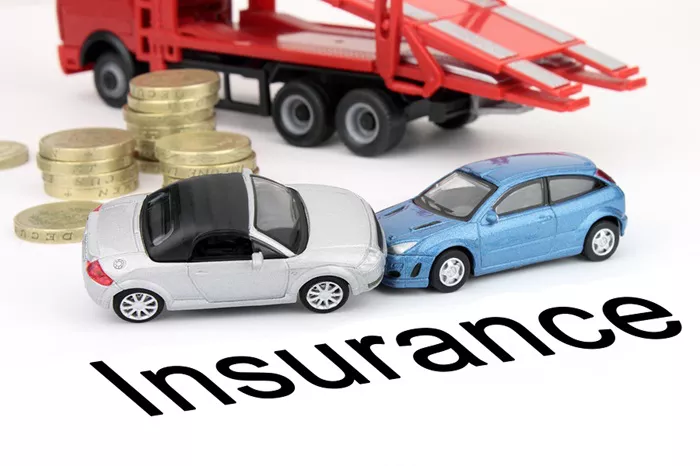When renting a car, it’s essential to understand the different types of insurance available to protect yourself from unexpected costs and liabilities. Knowing what car rental insurance you need can help you make informed decisions and ensure that you are adequately covered. This comprehensive guide will explore the various insurance options, their coverage details, and how to choose the right protection for your rental experience.
Understanding Car Rental Insurance
Car rental insurance is designed to provide financial protection in case of damage, theft, or accidents involving a rental vehicle. Without adequate coverage, you could face significant expenses, including repair costs or legal fees. Below, we will delve into the different types of car rental insurance and their benefits to help you determine what you need for your next rental.
Types of Car Rental Insurance
1. Collision Damage Waiver (CDW)
The Collision Damage Waiver is a popular option offered by rental companies. It is not technically insurance but a waiver that limits your financial responsibility for damage to the rental vehicle.
Coverage Details
Damage to the Vehicle: CDW covers the repair costs if the rental car is damaged in an accident.
Theft Protection: It also protects you if the car is stolen.
Considerations
Deductibles: Some CDW policies may require you to pay a deductible if you need to make a claim.
Exclusions: CDW often does not cover damages resulting from reckless driving or driving under the influence.
Cost: CDW is typically offered at an additional daily rate. The cost can vary depending on the rental company and the type of vehicle.
Coverage Limits: The amount covered can be subject to limits, so it’s important to review these details before accepting the waiver.
2. Loss Damage Waiver (LDW)
The Loss Damage Waiver is similar to CDW but often includes broader coverage.
Coverage Details
Damage and Theft: LDW covers both damage to the rental vehicle and theft.
Extended Coverage: It may offer more comprehensive protection compared to CDW.
Considerations
Costs: LDW can be more expensive than CDW but often provides more extensive coverage.
Personal Insurance: Check if your personal auto insurance or credit card offers coverage for loss damage.
Exclusions: As with CDW, LDW typically excludes coverage for certain types of damage or misuse of the vehicle.
Comparison: Compare LDW with your existing insurance to determine if it is necessary.
3. Liability Insurance
Liability insurance covers damage or injury caused to other people or property if you are at fault in an accident.
Coverage Details
Bodily Injury: Covers medical expenses and legal fees for injuries sustained by others in an accident.
Property Damage: Provides coverage for the repair or replacement of property damaged in the accident.
Considerations
State Requirements: Liability insurance requirements can vary by state or country. Ensure you meet the minimum requirements.
Coverage Limits: Check the limits of coverage to ensure it is sufficient to protect you financially.
Additional Coverage: Some rental companies offer additional liability coverage to increase your limits.
Existing Policies: Your personal auto insurance or credit card may provide liability coverage, which could reduce the need for additional rental coverage.
4. Personal Accident Insurance (PAI)
Personal Accident Insurance provides coverage for medical expenses and accidental death benefits for you and your passengers in the event of an accident.
Coverage Details
Medical Expenses: Covers medical treatment for injuries sustained by you and your passengers in an accident.
Accidental Death: Provides a benefit in the event of death resulting from an accident.
Considerations
Existing Coverage: Review your health insurance and travel insurance policies to determine if they offer similar coverage.
Coverage Limits: Evaluate whether the coverage amount meets your needs for medical expenses and accidental death.
Costs: PAI is typically offered at an additional daily rate.
Necessity: Consider whether the benefits provided by PAI are necessary given your existing insurance coverage.
5. Personal Effects Coverage (PEC)
Personal Effects Coverage protects your personal belongings inside the rental car if they are damaged or stolen.
Coverage Details
Theft Protection: Covers personal items stolen from the rental vehicle.
Damage Coverage: Provides compensation for personal belongings damaged in the car.
Considerations
Existing Policies: Check if your home or travel insurance already covers personal effects.
Coverage Limits: Ensure that the coverage limit is adequate for the value of your belongings.
Costs: PEC is typically offered at an additional daily rate.
Scope: Consider whether the protection offered is sufficient for your needs.
See Also: How Does Agreed Value Car Insurance Work
Choosing the Right Coverage
Assessing Your Existing Insurance
Before purchasing additional coverage from the rental company, review your existing insurance policies. Your personal auto insurance, health insurance, or credit card may already provide some level of coverage for rental cars.
Auto Insurance
Comprehensive and Collision Coverage: Check if your personal auto insurance extends to rental vehicles.
Liability Coverage: Verify if your auto insurance covers rental cars and meets the state’s minimum requirements.
Credit Card Coverage
Rental Car Insurance: Some credit cards offer insurance for rental cars when used to pay for the rental.
Coverage Limits: Confirm the extent of coverage provided by your credit card, including any exclusions or limitations.
Understanding Your Travel Needs
Consider your travel plans and risk factors when choosing insurance. If you’re traveling internationally or in an area with higher risks, additional coverage may be necessary.
International Travel
Local Insurance Requirements: Different countries may have specific insurance requirements for rental cars.
Rental Car Policies: Confirm the insurance policies and requirements in the country where you are renting.
Risk Assessment
Driving Conditions: Assess the driving environment and potential risks in the area where you will be renting the car.
Duration of Rental: Longer rentals may require more comprehensive coverage to ensure adequate protection.
Evaluating Cost vs. Coverage
Balance the cost of rental insurance with the level of coverage provided. While it may be tempting to opt for the cheapest option, ensure it adequately protects you against potential risks.
Insurance Costs
Daily Rates: Rental insurance is typically charged on a daily basis.
Total Cost: Consider the total cost of insurance for the duration of your rental.
Coverage Adequacy
Coverage Limits: Ensure that the coverage limits are sufficient to protect you financially in the event of an accident or damage.
Exclusions: Review any exclusions or limitations in the insurance policy to understand what is not covered.
Tips for Renting a Car
1. Review Rental Terms and Conditions
Carefully read the rental agreement to understand what is covered and any additional costs associated with insurance.
Terms and Conditions: Look for information on insurance coverage, deductibles, and exclusions.
Fees: Be aware of any additional fees for insurance coverage.
2. Ask Questions
Don’t hesitate to ask the rental company for clarification on insurance policies and coverage details.
Clarification: Ensure you understand the coverage options and any potential gaps.
Documentation: Request written documentation of the insurance coverage included in your rental.
3. Compare Options
Compare the rental company’s insurance options with your existing coverage to determine the best choice for your needs.
Coverage Comparison: Evaluate the coverage offered by the rental company against your personal insurance and credit card benefits.
Cost Comparison: Compare the cost of rental insurance with the coverage provided.
4. Document the Vehicle’s Condition
Before driving off, document any existing damage to the rental car to avoid disputes later.
Inspection: Inspect the vehicle thoroughly and take photos of any pre-existing damage.
Documentation: Ensure that any existing damage is noted in the rental agreement.
Conclusion
Choosing the right car rental insurance is essential to ensure that you are protected from unexpected costs and liabilities. Understanding the different types of insurance available, evaluating your existing coverage, and considering your travel needs will help you make an informed decision. By carefully reviewing your options and balancing cost with coverage, you can enjoy peace of mind during your rental experience.
When you are well-prepared and knowledgeable about what car rental insurance you need, you can confidently navigate the rental process and safeguard yourself against potential risks. This proactive approach will help you make the most of your rental experience without unnecessary worries.





















